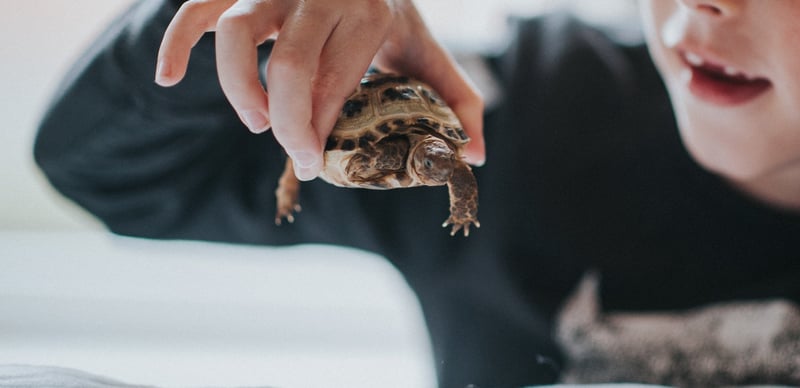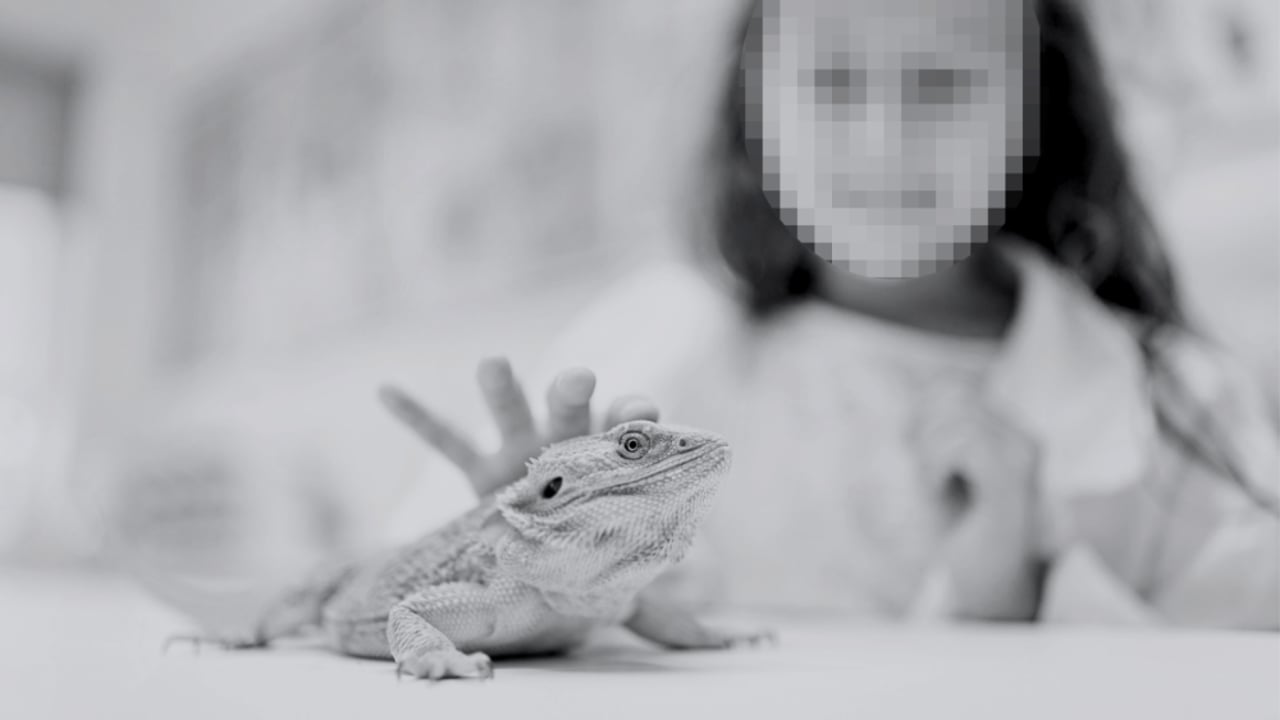
Animals kept in the classroom are dangerous for animals and students.
Children have a natural love for animals. It’s not surprising that many teachers think that having a classroom “pet” would be a fun and engaging way to teach children about responsibility and biology. But classrooms are stressful, dangerous, and even deadly for animals. Classroom “pets” also teach children the wrong lesson about wild animals and the environment.
1. Small Animals Suffer in Crowded, Noisy Classrooms
Many small animals are sensitive to noise and experience incredible stress in loud, chaotic classrooms. For example, as prey animals, guinea pigs and hamsters are extremely sensitive to loud noises and frighten easily. These traits aren’t a good match for large groups of rambunctious children.
Animals also require continual care, but schools shut down by 5pm and are closed on the weekends. Can you imagine being left alone and in the dark for days at a time? Some class “pets” are shipped home with various students on weekends and over school breaks. Being constantly moved and kept in strange environments is very stressful and leaves animals vulnerable to neglect and cruelty as they pass through strangers’ homes.
2. Handling Class “Pets” Endangers Children’s Health
Reptiles, amphibians, and other small mammals are a common source of Salmonella. The CDC warns families with children under five years old to avoid reptiles and amphibians because of the serious risk of illness from the germs they carry. Salmonella can cause severe illness and death, especially in young children. People with reptiles and amphibians are advised to wash their hands frequently and follow other health guidelines.
Despite this, bearded dragons and turtles are commonly kept in preschool classrooms. Think about how difficult it would be to make sure a dozen four-year-old children wash their hands every time they touch a bearded dragon’s cage!
A child petting a bearded dragon.
3. Classroom “Pet” Programs Benefit the Pet Industry, Not Animals
The pet industry likes classroom “pets” because it serves their business. Through its “Pets in the Classroom” grant program, the Pet Care Trust funds the purchase of animals to be used in classrooms. But a quick look at who sits on its board reveals the likely motivation. The Pet Care Trust is run by pet food and pet product manufacturers, as well as representatives from PetSmart and Petco. It all comes down to money. Not only do these companies profit when teachers buy food and supplies for animals in classrooms, but they’re telling children that it’s okay to buy animals and keep wild animals in captivity. In other words, they’re creating a new generation of customers under the guise of philanthropy! Virtually all animals sold in stores come from cruel mills where many animals suffer and even die. Teaching children compassion shouldn’t be tied up in an industry with a long track record of animal cruelty.
4. Wild Animals Don’t Belong in Captivity
Wild animals belong in the wild, not a cage or tank. Putting a turtle in a classroom doesn’t teach children about a turtle’s habitat or natural behaviors. It teaches them that turtles exist for our use and warps their understanding of what a turtle needs to thrive (hint: it’s not a tank).
We recognize that there are millions of wild animals already in captivity due to the greed of the pet industry. Sadly, almost all of these animals cannot be safely released into the wild. As we work to make this the last generation of wild animals living in captivity, we support groups caring for animals rescued from the cruel pet industry and helping them get adopted. But for the other reasons listed above, a class “pet,” even one who was adopted, is still not a great idea.
Teachers interested in keeping animals in the classroom have good motivations and likely a love for animals themselves. Checking out humane education resources like those offered by HEART or visiting an accredited sanctuary is a better way to foster empathy in children.
